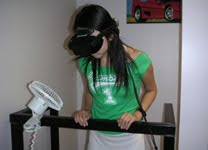Why i want to use
heart beat sensor?
- based on the survey, high percentage symptoms felt by the user when placed at high altitude environment is fast heart beat. (refer case studies ver.1.2)
*based on research by Nazrita Ibrahim, Mustafa Agil Muhamad Balbed, Azmi Mohd Yusof, Faridah Hani Mohammed Salleh, Jaspaljeet Singh, Mohamad Shahrul Shahida
Why i want to use proxy sensor?
-when user reach to some area, the proxy sensor will detect the user and the fan will automatically on. It will give wind and sound effect to give more realism.

How user can feel the emotion?
-realistic environment - texture/modelling (using HMD)
-stimuli such as wind, vibration and sound can be added to create further realism
-blended environment? installation art?





